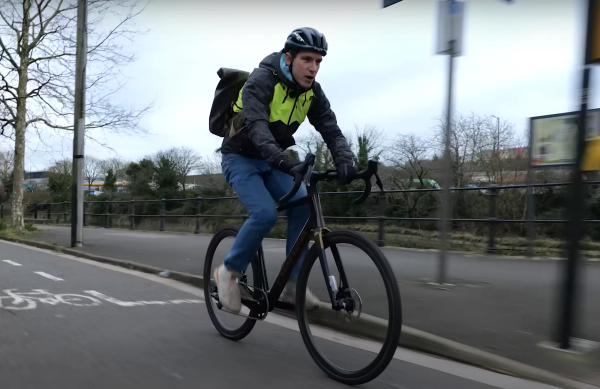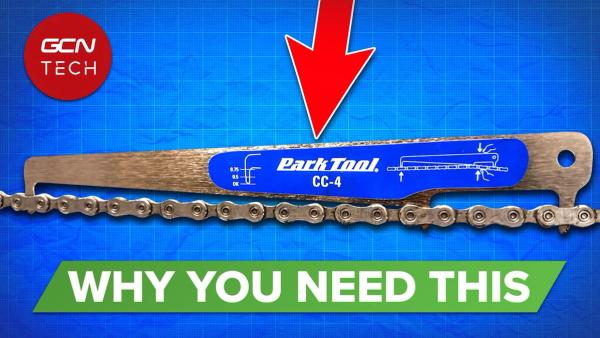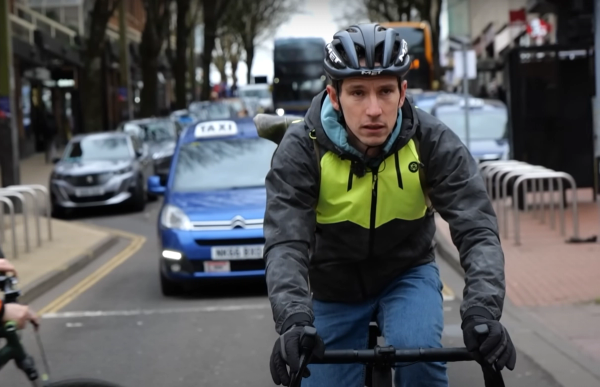The true cost of cycling: What gear should you buy to get started?
How much you should spend on a bike and gear if you're new to cycling
Alex Hunt
Junior Tech Writer
If you're looking to get into cycling, then no matter what type of riding you intend to do, you're going to need some essential kit to set you off on the right path.
Knowing exactly what you need and how much you should be spending can be overwhelming. With bikes and kit prices seemingly soaring, making sure you invest your money in the right items has never been more important. That's where Alex Paton and Ollie Bridgewood have you covered with their essential guide.
Although a lot of the newest tech that we discuss within GCN Tech does occupy the higher end of the market there are plenty of great technical products out there across a variety of price ranges. The key is to maximise what you get for your chosen budget that will suit your riding needs.
Whatever type of riding you're into the core essentials will be similar. They are: bike, helmet, shorts, jersey, rear light, pump, inner tube, tyre levers, saddlebag, bottle, bottle cage, pedals.
While some of these are more vital than others we feel these are the items that will help keep you safe and comfortable and ensure you start cycling in an enjoyable way.
Bike
The obvious starting point – you are going to need a bike! This is where the largest portion of your budget should be spent. You should be able to get a good first road bike for around the £/€/$300-500 mark. Although it might not come packed with the latest technology or be feathery lightweight, the bike will be functional and serviceable at this price point.
If you're luck enough to have a larger budget and are able to spend considerably more on a first bike, we'd suggest considering a carbon fibre frame which is durable while also being incredibly lightweight. Regardless of how much you're able to spend, we'd suggest sticking to a mid-tier build with mid-level components. While you're still finding your feet, a top-tier groupset or wheelset will not offer the performance benefits that it will once you are a more experienced rider. Mid-tier stuff is more than good enough, plus it's cheaper to replace, making it ideal for getting started.
New or used?
When it comes to actually buying your first bike, you’ll need to decide whether to go for a brand-new bike or to go down the second-hand route.
- Read more: 10 top tips for buying a second-hand bike
The big benefit of buying second hand is you're more likely to get a better spec than a comparatively priced new bike. However, if you're new to cycling, buying second-hand can be daunting as it is hard to know exactly what you are looking for and perhaps just as importantly what you should avoid. Enlisting the help of a friend who knows their way around a bike can be really useful to make sure you aren’t buying a bike that is just going to cause problems down the road.
Buying a brand new bike might not be as cost-effective, but you will get access to after-sales support and a warranty, should you run into any issues.
Helmet
The principal feature you should look out for when buying a helmet is a formal certification. In most countries for safety equipment to be legally sold it needs to have passed some form of inspection. Any helmet without a label denoting that it is certified should be avoided as it may not offer the protection you'd expect.

© GCN
Depending on where you live check for what safety markings a helmet needs to have before buying one
A premium helmet is something that can cost an eye-watering amount of money. Even though these may have more desirable features such as MIPS (Multi-directional Impact Protection) they will still have been tested to the same standards as cheaper helmets.
The crucial thing to look for when buying a helmet is that it’s comfortable and fits well. Beyond this, as long as it has the safety certification you can spend as much or as little as you desire. So we'd suggest this is an area you can save a little to start with by opting for a more basic helmet.
Cycling Kit
While it is possible to cycle in regular clothing it's worth investing in some cycling-specific kit. This will keep you comfortable whilst riding and has been designed with the motion of pedalling in mind, so can prevent injuries such as saddle sores.
There is a sweet spot here where you can get a lot of the functionality of premium kit but without the price tag that typically comes with it.
Now, we're unashamedly biased for this bit but the GCN Core kit is an ideal example of the type of quality kit you can buy without breaking the bank. Although it might not use the latest aerodynamic fabrics or have a race cut, it does feature the essential components of a good piece of cycling kit.

© GCN
A pair of cycling shorts with a chamois pad will protect you from chafing on the saddle
Finding a jersey that has three pockets at the back will allow you to carry spares, food, or your phone out on a ride. A full-length zip will also allow you to put it on easily and regulate your temperature more easily.
When it comes to shorts, spending a bit of money to get a pair of bib shorts is a worthwhile investment. These are essentially padded shorts that have straps that go over your shoulders to hold them in place. The other thing to look out for is a good quality chamois pad that will protect your skin from chafing on the saddle.
Bike computer
A bike computer isn't essential, but it's a great bit of tech to have. Not only can you see how far you have ridden and at what speed but it can also be used as a navigation tool. It can be a fairly sizeable investment though and whilst you are getting into riding it isn't as necessary as some of the other items on this list. Using a bike mount for your phone will allow you to use the big screen of your phone for navigation and recording your rides. Ollie recently took a look to see if you can replace a bike computer with your smart phone and found that this can be a great solution that saves you money.
Read more: Phone vs bike computer
Pumps
There are two main types of pumps you should know about. Firstly there are track pumps. These are the big floor pumps that you would use at home. They move a large volume of air with each compression of the handle, meaning that they are very good at inflating your tyres quickly. The downside is that they are very large so although they are great at home, it's virtually impossible to take one out on a ride.
This is where the second type of pump comes in. A hand pump or mini pump is far smaller and can fit in the pocket of your jersey or attach to your frame. These are one of the essential tools to take with you on every ride and although require more effort to inflate the tyres, they do the job very nicely.
If you're unsure as to what the right tyre pressure should be, there are some handy guides out there to help. Silca has a tyre pressure calculator on their website that will take the guesswork out of the equation.
Rear light
Having a good rear light is essential, and not just for night riding. These days, many cyclists opt to ride with a rear light even in broad daylight. It makes you much more easily visible to drivers approaching you from behind.

© GCN
A rechargeable rear light is going to be the most cost effective solution
A feature to look out for when choosing a light is a rechargable battery. Lights with replaceable batteries are often cheaper to buy initially but because they consume batteries at an alarming rate, they will cost you more in the long run. Spending a little bit more and getting yourself a rechargeable light now will be money well spent.
Spares and repairs
If you spend lots of time out on the road then you are certain to run into the most common repair issue in cycling – a puncture. We've already addressed the type of pump you need but alongside this you'll also require a spare inner tube, some tyre levers and something to put it all in.
We've spoken a lot about different types of inner tubes here at GCN however when you're getting started all you need is a typical black butyl inner tube that's the correct size for your tyre. These can be picked up for around £/€/$5 so it's worth getting a couple so you're ready when that inevitable puncture strikes.
Tyre levers are small plastic or metal tools that can be used to pry a tyre off the rim of the wheel. We strongly advise you to get a plastic set as the metal ones can easily cause damage to your rim.

© GCN
A set of plastic tyre levers are the cheapest and safest tool for removing a tyre
So how do you carry all this around? Well, we recommend a saddle bag. Sure, you could stash it all in your jersey pockets but this leaves no room for food and can also be quite uncomfortable. Getting a small saddle bag that will fit the essential kit in means you'll always have it with you when you head out for a ride. A good saddle bag is likely to cost in the region of £/€/$20.
Bottle and cage
If you're planning on riding for anything more than 30 minutes you should take some water with you to keep you hydrated. Road bikes have little bolts on the inside of the frame, specifically on the down tube and the seat tube which have been designed to fit a bottle cage, which in turn will hold your water bottle on the bike.
There are plenty of offerings out there for both bottles and bottle cages. The best thing to do is to find a good sturdy plastic or metal bottle cage first and then get a cycling-specific bottle that is designed to fit securely inside a cage. A typical bottle size is between 500-750ml. If you want to take more than this, most bikes will have the provision for you to add a second cage and bottle.
Pedals
It might come as a surprise to find out that a lot of bikes don't actually come with pedals. This is because riders typically have their own set of pedals that they like to use and will move them from bike to bike. Because there are multiple styles of pedals out there it simply doesn’t make sense for the bike manufacturer to ship the bike with any.
It can be tempting to go straight into buying clipless pedals and cycling shoes to match. However, this can often be a step too far, too quickly. The last thing you need as a beginner is to focus on clipping in or out of the pedals rather than paying attention to the road ahead.
When you get started, a good pair of flat pedals will give you the freedom to take your feet off easily as well as giving you a nice supportive and grippy base when you are putting the power down.

© GCN
A pair of flat pedals will mean you can focus on riding and what is going on around you without the panic of being clipped in
If and when you do want to progress to clipless shoes, consider a mountain bike-style shoe and pedal systems. Mountain bike pedals are double-sided, making them easier to get in and out of. Plus, the shoes are designed so you can walk around in them without the cleat getting in your way, unlike road-specific shoes.
Saddle
You would be hard-pressed to find a bike that comes without a saddle but don’t let this fool you. Just because a bike has a saddle does not mean it is the right one for you. Saddles come in all different shapes and sizes much like us humans and as a result, you need to find one that works with your body.

© GCN
Trying out a few saddles to find what works is the best way to find the right saddle for you
Most bike shops will have trial saddles that you can try out to find a model that works well and is comfortable. Spending as much as you need to find the right saddle will be a worthwhile investment. A poorly fitting saddle can not only cause discomfort but also injury so spending the time and money to get this right will benefit you in the long run.
- Read more: How to choose a saddle
Where is best to buy all this?
There are two main routes you can take when it comes to actually buying all of this kit: in person at your local bike shop, or online. If you are wise with your choices and take the advice above on board you will be looking to get fully kitted out and on the road for between £/€/$500-700.
Buying online opens you up to a whole range of products giving you all the choices you could ever want. It also means that you can hunt around for the best price and you can do it all from the comfort of your home.
Now, having all the choices in the world can be great but if you're new to cycling it can also be overwhelming.
This is where your local bike shop comes in. Not only will they be hands-on to give you advice based on what you are looking for but they will also allow you to try things before you buy them.
Additionally, the after-sales service that most bike shops pride themselves on will be hard to replicate when shopping online. While you might pay a little more at a local shop, the ability to pop back in to deal with issues or concerns can be worth the extra cost.
How long is all this going to last me?
The kit you need when starting out is not going to be the kit that suits you best as you progress and start to explore the world of cycling further. As a rough rule, an entry-level bike is probably going to be good for around a year to 18 months before you might want to look at some upgrades or trade it in for a higher-spec model.
As your fitness levels grow and you are riding further and/or faster you will start to notice the performance benefits some more advanced kit will offer such as a good set of tyres or a bespoke cycling computer.
Some of the kit in the list will last you years if you look after it and if you spend a bit of money on it at the start there will be no need to replace it any time soon. A pump, saddle bag, light and clothing are all going to last many seasons of riding if they are well looked after.
Hopefully, this has given you an idea of what you are looking for when diving into the world of cycling. It can be daunting and seemingly expensive at first but by following this advice you should be on the road in no time and we can be sure that you won’t regret it!


.png?w=600&auto=format)


.png?w=600&auto=format)










